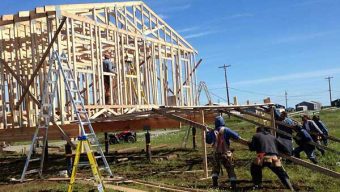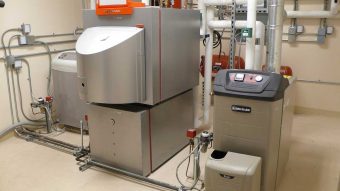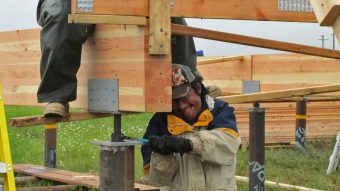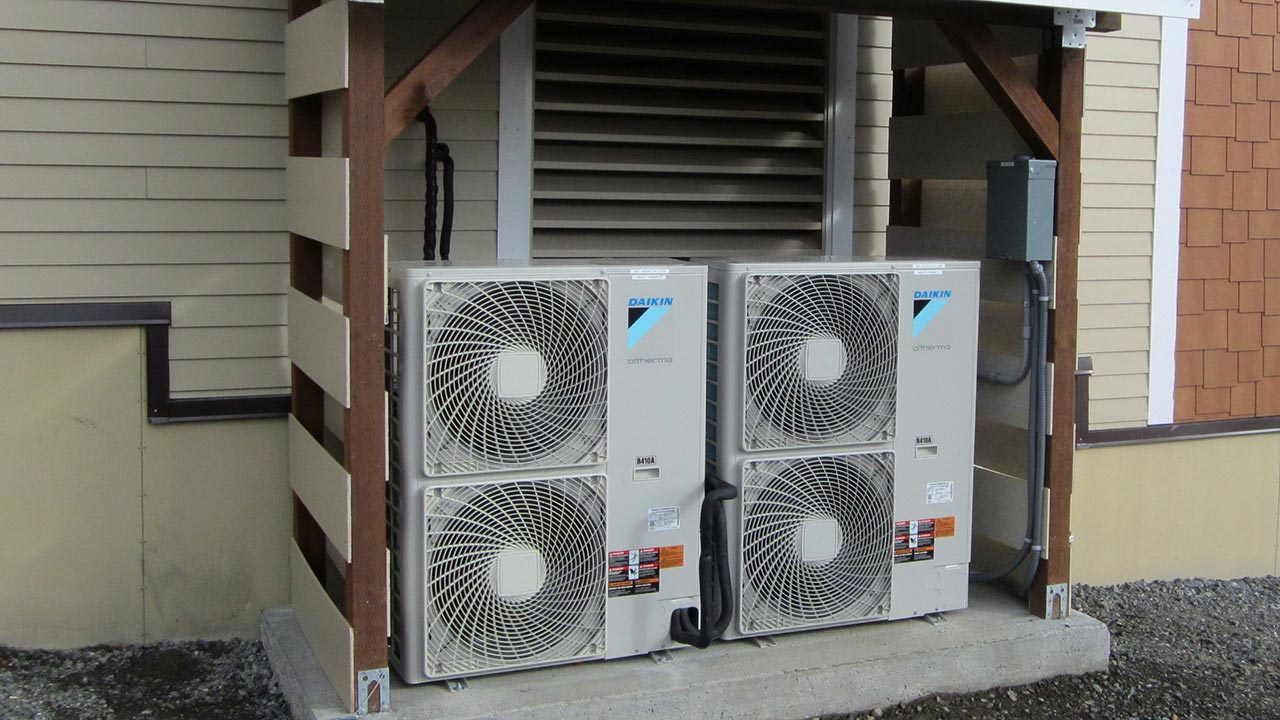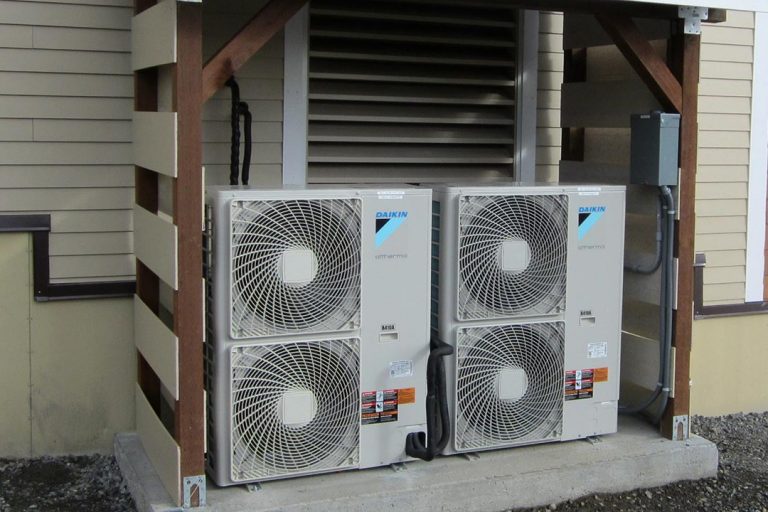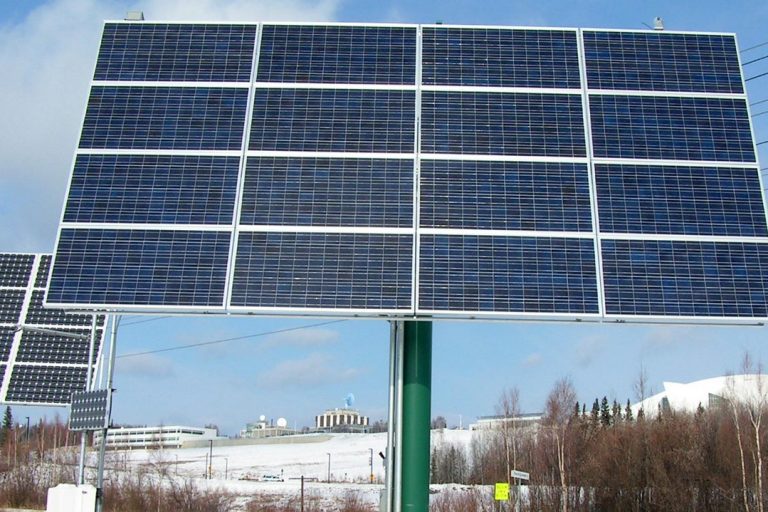Air Source Heat Pumps
Air source heat pumps have traditionally been used in warmer climates than Alaska for both heating and air conditioning. However, recent models of ASHPs are able to provide space heating at lower temperatures, down to 0°F. ASHPs take heat from the ambient air and use electricity to “step up” the heat to a temperature usable for space heating. They deliver heat through forced air distribution.
In a traditional ducted ASHPsystem, heat is distributed to individual rooms by ducts. Mini-split ductless ASHPs have indoor wall-mounted units that deliver heat directly to a room. Air-to-water heat pumps provide heated water for a hydronic distribution system or for domestic hot water uses.
How it Works
An ASHP acts like a refrigerator running in reverse, using a refrigeration cycle to gather heat from the outdoor air and transfer it to a home’s interior. In an air-to-air heat pump, fluid (liquid refrigerant) travels through coils of pipe in the outside unit, heats up and evaporates into a gas. Then the gas is compressed (in a compressor) until it becomes hot enough for space heating.
The heated gas passes through a set of indoor coils, where it transfers heat to the indoor air and condenses back into a liquid. A fan moves the heat into a room or through ducts, and the fluid moves through the cycle again. In an air-to-water heat pump, the heat from the refrigerant is transferred to water instead of air.
Efficiency Range
The efficiency of ASHPs is measured by the coefficient of performance, with a higher number indicating a more efficient appliance. ASHPs in warmer parts of Alaska might have a performance of 2-3, which corresponds to an efficiency of 200-300%. ASHPs can have efficiencies over 100% because unlike other appliances that convert fuel to heat, heat pumps instead use electricity to intensify naturally occurring heat.
This means that occupants receive more heat than is contained in the electricity used to run the heat pump.
The efficiency of a heat pump depends on the outdoor temperature, and thus will fluctuate throughout the winter. Lower outdoor temperatures result in less efficient heat pumps, because there is less heat available in the atmosphere. Thus, it is important to select a model of ASHP that can work efficiently even at the coldest temperatures of the year.
Related Resources
| Title | Resource Link |
|---|---|
| Air Source Heat Pump Calculator | |
| Air Source Heat Pump Potential in Alaska | |
| Air Source Heat Pump Technology Assessment | |
| BrHEAThe System with Air Source Heat Pump-Feasibility Study | |
| BrHEAThe System with Air Source Heat Pump-Lab Study | |
| Cold Climate Heat Pump Study – Oak Ridge National Lab |

